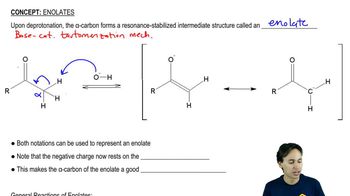Predict the product(s) that would result when molecules (a)–(p) are allowed to react under the following conditions: (iv) 1. TsCl, Et₃N 2. NaCN ; (v) 1. TsCl, Et₃N 2. NaOt-Bu . If no reaction occurs, write 'no reaction.'
(a)
 Verified step by step guidance
Verified step by step guidance Verified video answer for a similar problem:
Verified video answer for a similar problem:



 7:53m
7:53mMaster Learning the mechanism of Sulfonyl Chlorides. with a bite sized video explanation from Johnny
Start learning